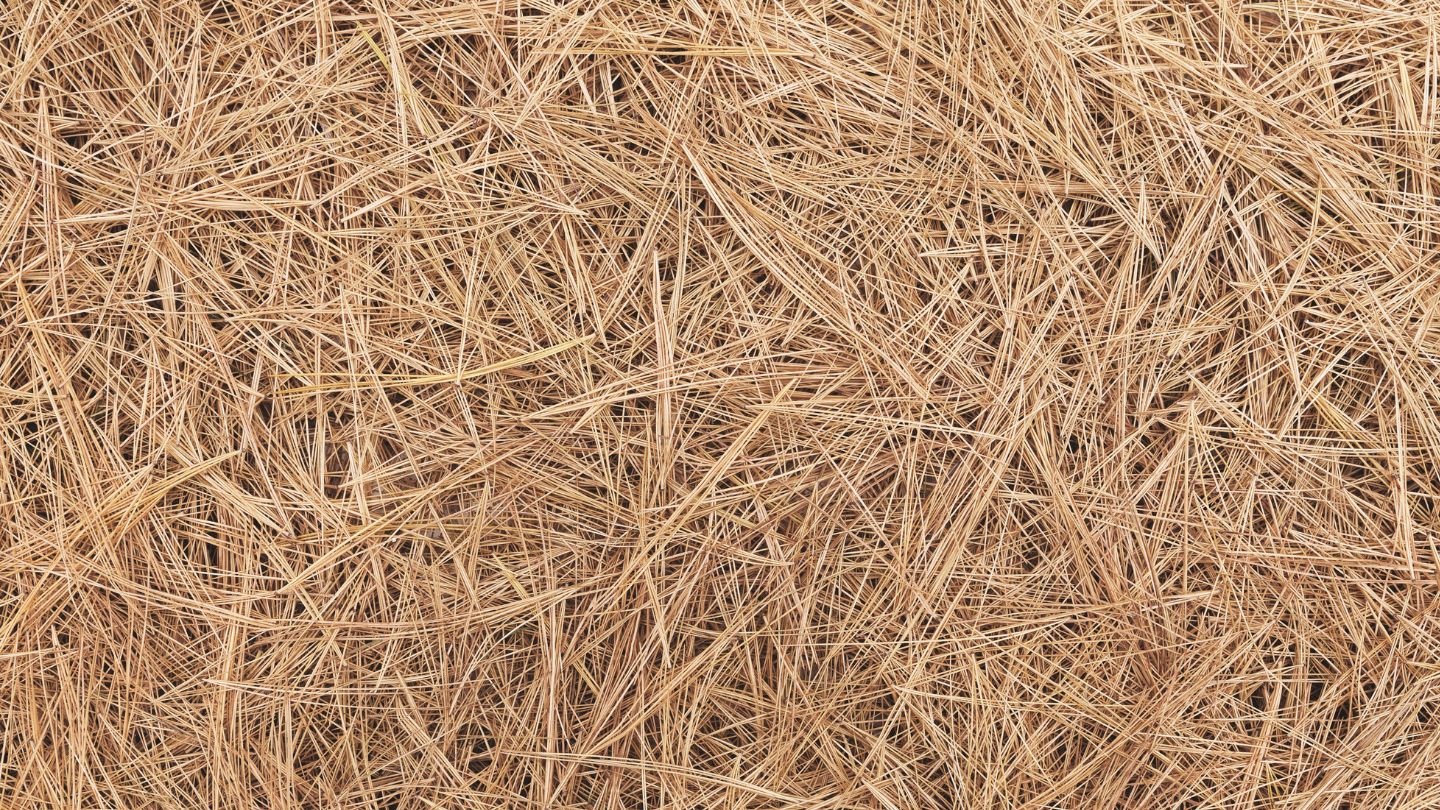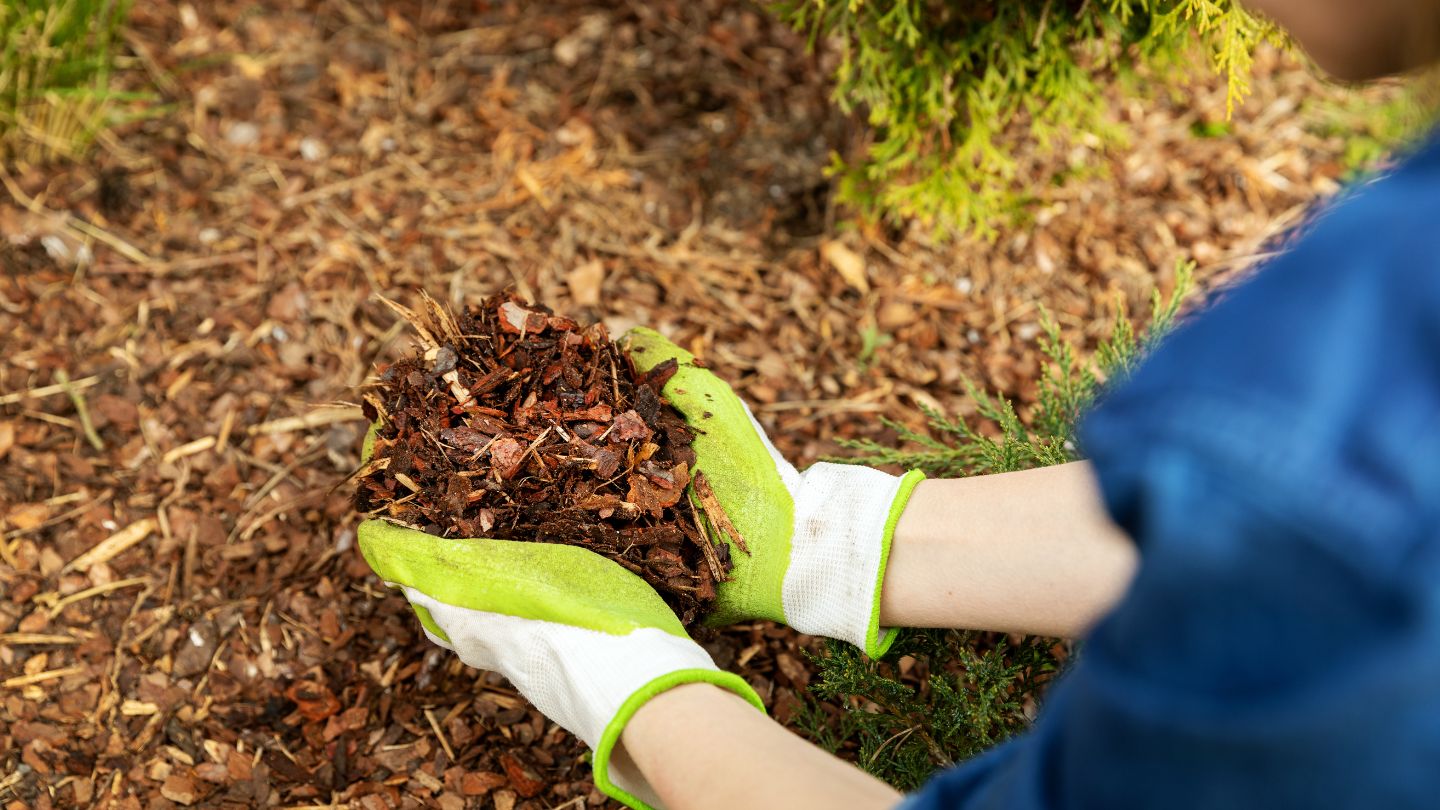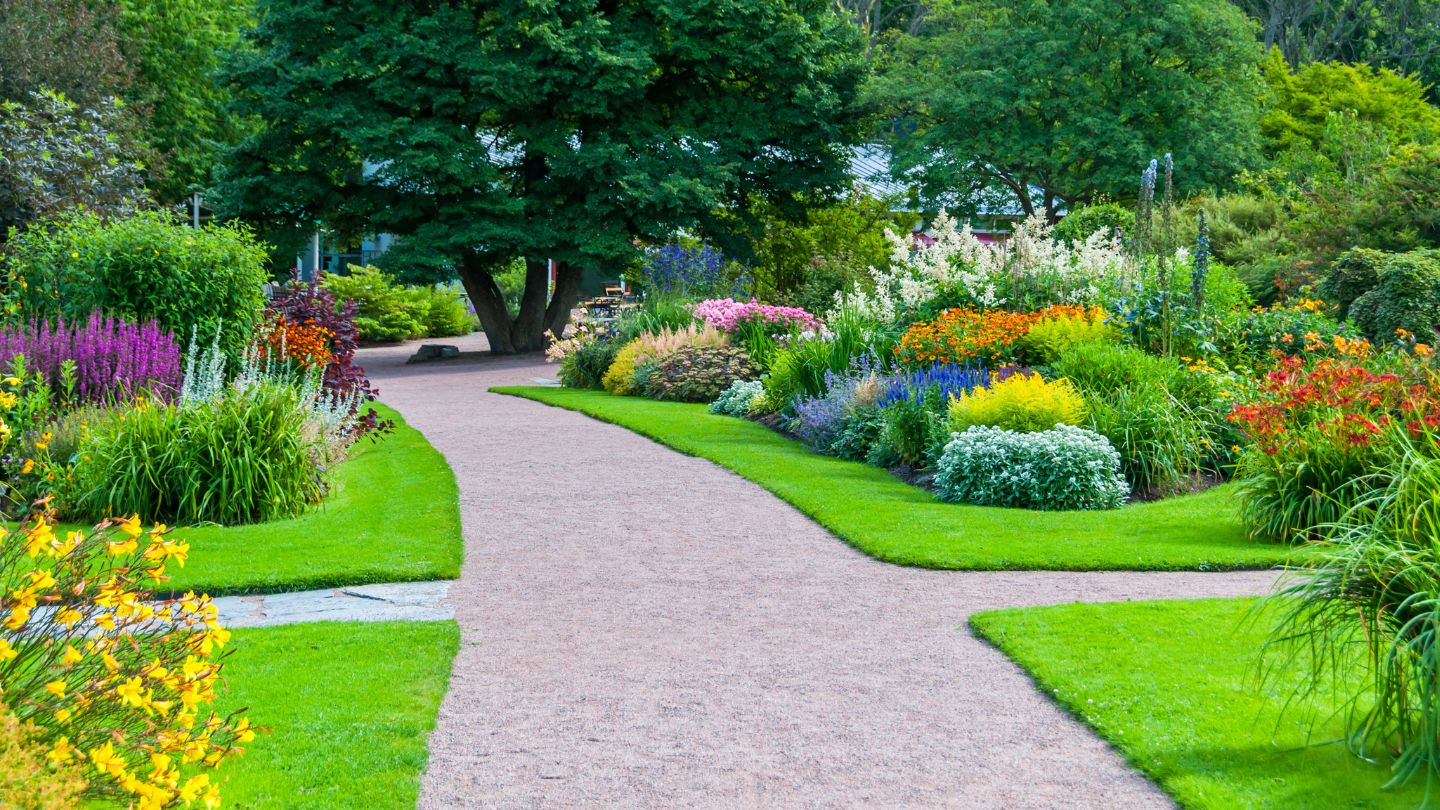Choosing the right time to install mulch or pine straw can make a big difference for your garden’s health and growth. From protecting plants during winter’s chill to fostering vibrant spring growth, timing is everything. Each season offers unique benefits, and understanding when to add mulch or pine straw can maximize its impact. Whether you’re preparing for colder months or boosting your garden’s spring potential, this guide will help you determine the ideal timing to get the most out of your efforts. Let’s dive into the seasonal advantages and learn how to care for your landscape year-round!
Key Takeaways
- Installing mulch or pine straw in January or February protects plants from freezing temperatures and enhances moisture retention.
- Spring is an ideal time for pine straw application, benefiting plant growth while providing soil enrichment and aesthetic appeal.
- Late fall application of pine straw insulates roots and retains moisture, preventing winter soil erosion and enhancing soil fertility.
Why Timing Matters for Mulch and Pine Straw
The timing of mulch and pine straw installation is crucial. Acting as insulators, they protect plant roots during the harsh early winter months. Applying mulch or pine straw in January or February is especially beneficial, shielding plants from freezing temperatures and ensuring they stay healthy and resilient through winter.
Timing also affects moisture retention and overall plant health. Mulch and pine straw regulate soil temperature and moisture levels, fostering a stable environment for your plants. Choosing the optimal months for installation is a crucial step that enhances both the appearance and functionality of your garden.
Ideal Months for Installing Mulch
Choosing the right months for mulch installation can greatly affect your garden’s health and appearance. In areas like Atlanta, January, February, and April are prime months. January, in particular, is ideal for temperature regulation and moisture retention, keeping your plants protected during the colder months. To better understand the considerations around annual mulching, especially for different garden needs, refer to this detailed guide.
The timing of mulch installation affects both plant health and garden aesthetics. Installing mulch in January or February protects plants from freezing temperatures, while April offers a balance between guarding against late frosts and supporting new growth.
Various mulches offer distinct benefits:
- Pine mulch suits acid-loving plants and can slightly acidify the soil.
- Hardwood mulch offers long-lasting cover.
- Fresh mulch boosts the visual appeal of garden beds, making them look vibrant and well-maintained.
Best Time of Year to Put Down Pine Straw

Pine straw is versatile and can be applied year-round. Key points about its application include:
- January and February are ideal months for application, as they help protect plants from winter’s chill.
- Applying pine straw after the initial frost safeguards plant roots from freezing.
- This helps keep your garden healthy and vibrant.
Although pine straw can be applied anytime, spring is often preferred due to the growing season. Spring application balances protection and nourishment, aiding plant growth during their most active periods. Additionally, pine straw’s acidity enriches the soil, benefiting many southern plants.
The timing for applying pine straw is flexible and can be based on your garden’s needs. Whether you choose early spring or late fall, the perfect time for applying pine straw offers protection and soil enrichment, keeping your plants healthy and flourishing.
Benefits of Early Spring Installation
Early spring installation of mulch or pine straw provides numerous benefits:
- Better weed suppression by acting as a protective layer that prevents weeds from taking root
- Longer-lasting coverage
- Conservation of soil moisture, which is crucial for plants starting their growing season
Beyond weed suppression, early spring application of pine straw mulch offers several benefits:
- Warms the soil, promoting early plant growth.
- Benefits plants that break dormancy early by ensuring a warm and supportive environment.
- Protects plants from freezing temperatures when installed in January or February, giving them a head start.
Early spring installation also extends the visual appeal of your garden. Pine straw turns a rich auburn when wet, adding aesthetic diversity. Its fine texture enhances the beautiful landscape without causing muddy splashes on plants, keeping your garden pristine and well-maintained. Flowers add an additional layer of beauty to this setting, complemented by pine needles.
Advantages of Late Fall Application
Late fall application of pine straw offers several advantages. It effectively shields plant roots from freezing temperatures. As the weather cools, pine straw insulates the soil, protecting delicate root systems from early winter’s harsh conditions.
Applying pine straw in late fall offers several benefits:
- Helps retain soil moisture, reducing the need for frequent watering during winter.
- Keeps plants hydrated and healthy.
- As pine straw decomposes over winter, it enriches the soil with organic matter.
- Enhances soil fertility and structure.
Pine straw mulch prevents soil erosion during winter rains and snowmelt. Its interlocking nature holds soil in place, preventing it from washing away and keeping your garden intact and ready for the next growing season through mulching.
How Seasonal Weather Affects Mulch and Pine Straw
Seasonal weather patterns significantly influence the effectiveness of mulch and pine straw in gardens. Spring and late fall are common times to spread mulch and pine straw, aligning with weather conditions that benefit plant health. Understanding this relationship can enhance garden performance.
Pine straw mulch can be displaced by wind before it settles into a stable layer, which is important to consider in windy areas. Despite this, long needle pine straw effectively suppresses weed growth and regulates soil moisture, both influenced by weather.
Seasonal weather impacts moisture retention and soil protection. Mulch and pine straw regulate soil temperature and moisture levels, creating a stable environment to maintain plants. Aligning their installation with seasonal weather patterns maximizes benefits, ensuring a healthy, thriving garden.
Practical Tips for Applying Mulch and Pine Straw
Proper application of mulch and pine straw significantly impacts garden health and appearance. For pine straw, a thickness of 3 to 6 inches ensures adequate coverage and protection. Using a bow rake helps spread pine straw evenly, giving your garden a polished, professional look.
For a finished appearance, spread pine straw about a foot outside the intended area, then rake it back. This technique creates clean edges and prevents encroachment on pathways. Pine straw’s lightweight nature makes it easy to handle and apply, allowing for quick installation.
When applying new mulch, leaving old pine straw in place enriches the soil. Decomposing straw adds organic matter, improving soil structure and fertility. Some experts suggest removing old layers before applying new pine straw. Whether using pine straw or other mulch types, these tips will help you achieve a beautiful, healthy landscape.
Choosing Between Mulch and Pine Straw Based on Season
Choosing between mulch and pine straw depends on the season and your garden’s needs. Pine straw insulates roots, blocks weeds, conserves moisture, and enhances aesthetics. Its interlocking nature retains moisture while allowing water and air circulation in the soil, ideal for hot weather.
Both mulch and pine straw suppress weed growth by blocking sunlight and covering bare soil, simplifying garden maintenance and aiding in weed control. Personal preference, aesthetics, and plant type should guide your choice. Pine straw suits acid-loving plants, while hardwood mulch offers long-lasting coverage and a rich appearance as a ground cover.
When applying pine straw, keep it 2 to 3 inches away from plant bases to prevent smothering. By considering these factors and the season, you can choose the material that best suits your garden’s needs, ensuring optimal plant health and thriving.
Where to Buy Quality Mulch and Pine Straw

Finding quality mulch and pine straw is crucial for a beautiful, healthy garden. Many local garden centers offer high-quality natural mulch and pine straw sourced from nearby suppliers, providing various options to suit your specific needs.
Some landscaping companies sell mulch and pine straw alongside installation services, offering a professional touch. Local farmers or agricultural supply stores may also provide mulch and pine straw at competitive prices, offering an affordable option.
Home improvement stores like Lowe’s and Home Depot offer various mulch and pine straw options. Additionally, online retailers sell and deliver mulch and pine straw directly to customers. Quality mulch and pine straw are crucial for garden health and aesthetic appeal, keeping your landscape vibrant and thriving.
The Best Time to Install Mulch or Pine Straw
When it comes to installing mulch or pine straw, timing can make all the difference. While spring is often the most popular season due to its role in helping plants thrive during their growing period, fall is also ideal for protecting plant roots during colder months. Ultimately, the best month depends on your garden’s specific needs and the local weather conditions. By planning carefully, you can enhance your garden’s health, appearance, and resilience year-round.
At Mulch Pros, we make it easy to find high-quality mulch and pine straw in Milton and nearby areas. With our exceptional service and reliable delivery, we’re here to help you choose the right materials at the right time. Whether you’re refreshing your garden’s look or ensuring its health, trust us to help your outdoor spaces flourish.
Frequently Asked Questions
When is the best time to install mulch or pine straw?
The best time to install mulch or pine straw depends on your garden’s needs and local climate. Early spring is ideal for promoting plant growth and moisture retention, while late fall is perfect for protecting roots during winter. Both seasons offer unique advantages for landscape health.
Can I install pine straw or mulch during the winter?
Yes, installing pine straw or mulch in winter, particularly in January or February, can protect plant roots from freezing temperatures and enhance moisture retention in the soil. It also insulates plants, keeping them healthy through the harsh winter months.
What are the benefits of installing mulch or pine straw in the spring?
Spring installation supports plant growth by warming the soil, improving moisture conservation, and suppressing weeds. This timing aligns with the growing season, ensuring plants have the best conditions to thrive.
How thick should I apply pine straw or mulch?
A layer between 3 to 6 inches is recommended for pine straw or mulch. This ensures adequate coverage for moisture retention, weed suppression, and root insulation without smothering plants.
Should I remove old mulch or pine straw before applying a new layer?
Not necessarily. Old mulch or pine straw can be left in place to decompose, enriching the soil with organic matter. However, if the existing layer is too thick or compacted, it’s best to remove some to prevent issues like suffocating plant roots.


